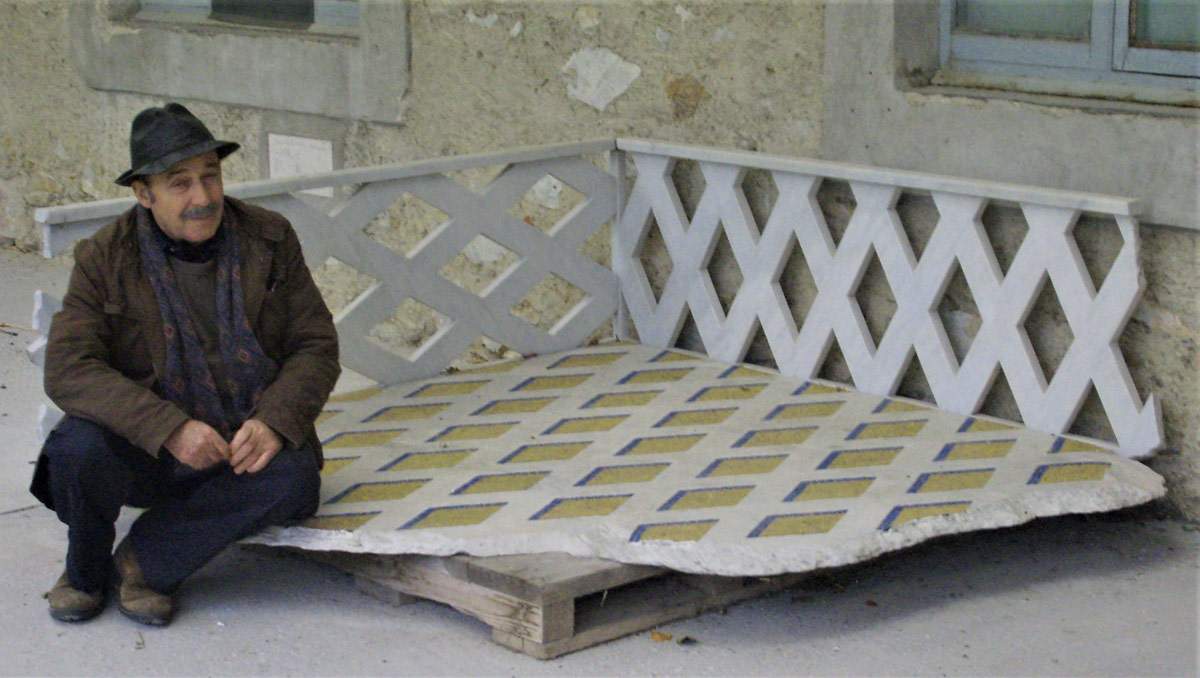Italian-Argentine sculptor Antonio Trotta, famous for his light marble works, passed away tonight at the age of 82. Born in Stio (Salerno), near Paestum, in 1937, when he was only 12 years old he moved with his family to Argentina, to the city of La Plata, and in the South American country he began his artistic career by animating the Gruppo Sì, of which he was a founder. After exhibiting in a number of Argentine galleries and museums, including the Museo de Bellas Artes in Buenos Aires and the Vignes Gallery (where he participated in a group show “Homage to Che Guevara”), he came to international success in 1968 with his participation in the Venice Biennale, as part of which he met Lucio Fontana and exhibited three works: Alta tensione, Verifica and Accoppiamento, all made between 1967 and 1968 and all with poor materials such as wood and iron wire (the artist would come to marble later). Trotta returned to Italy, settling in Milan, in the late 1960s, at a time when military juntas were beginning to follow one another in Argentina.
Beginning in the 1970s he began to exhibit throughout Italy and also designed major urban interventions in several cities. Among the galleries in which he exhibited over the years were the Galleria François Lambert in Milan, the Galleria Bonomo in Bari, and the Galleria Cardi in Milan: several of his exhibitions in Italy, including in public museums such as the Galleria Nazionale d’Arte Moderna e Contemporanea in Rome, the Padiglione d’Arte Contemporanea in Milan, the Galleria d’Arte Moderna in Bologna, and the Galleria Civica in Modena. Also starting from the 1970s, Antonio Trotta was often present in Versilia, where he took part in several exhibitions: in particular, his connection with the Nicola Ricci Gallery in Carrara is worth mentioning, which contributed to the success of many of the exhibitions in which Trotta was a protagonist (such as Fioriture asimmetriche held at the Centro Arti Plastiche in Carrara in 2013). There were a total of four participations by Trotta in the Venice Biennale: in 1968, 1976, 1978 and 1990. And still, among the most important international exhibitions Trotta has participated in are the Lyon and Carrara Biennales.
In 2007 in Stio, Antonio Trotta’s hometown, a Museum/Archive dedicated to him was inaugurated, where some of his most significant works are preserved, including some presented at the Venetian Biennials: Embroidering Him self (from 1975), a silk embroidery inspired by Vermeer; The Olive Tree in the East, a plaster cast of one of his best-known sculptures (a realistic marble veil on which an olive tree is drawn); and The Fountain of Peace. Since 2009 Antonio Trotta was also an academician of St. Luke’s. In the sphere of public sculpture, in which he was long active, Trotta’s works include the monument to the Resistance in the public gardens of La Spezia and Abiterò il mio nome, a monument to Gabriele D’Annunzio preserved at the Vittoriale degli Italiani.
“Antonio Trotta,” critic Marisa Volpi Orlandini has written, “finds in his work a zone of rarefaction where emotion is concealed and shown with subtle play, slowing down in the viewer the participation of the heart and setting the mind in motion, or rather (as Nabokov would say), ’exciting the spine.’” The most well-known part of his production is certainly the marble work, a material that Trotta was able to make light, giving it the appearance of a veil, a sheet of paper, a sheet, a woven net. In Trotta’s work, Volpi Orlandini again wrote, marble “loses its connotation to play a kind of vibrant skirmish of tensions with the theme and with the final iconographic result. Art can stop a moment of life: capturing it demands a quick game. A three-cornered game between idealism that elevates it, manner that conceals it, and death that sinks it. That’s why the marble becomes light, the silk so poor, and the whole sculpture disarranges itself for a magical moment of reflection on absence.”
Pictured: Antonio Trotta photographed by Nicola Carrino in his studio.
 |
| Farewell to Antonio Trotta, the sculptor who made marble light as paper |
Warning: the translation into English of the original Italian article was created using automatic tools. We undertake to review all articles, but we do not guarantee the total absence of inaccuracies in the translation due to the program. You can find the original by clicking on the ITA button. If you find any mistake,please contact us.